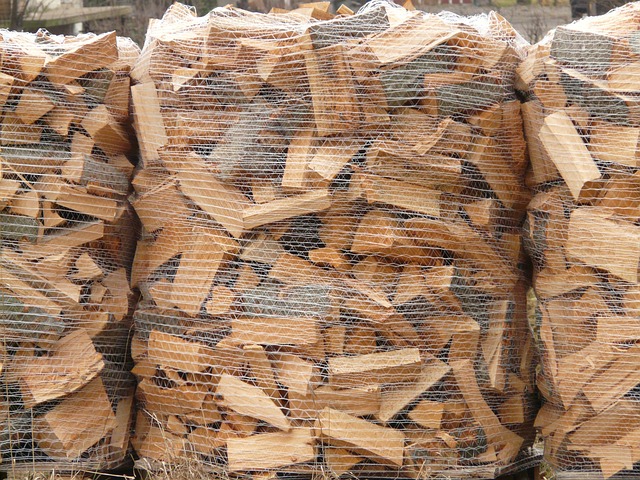As someone who loves the comforting glow of a well-built fire, I’ve learned that proper storage can make all the difference in ensuring a smooth and enjoyable experience. Today I’ll dive into the question that often pops up: does firewood need to be covered?
Yes, covering firewood is highly recommended. It protects the wood from moisture, prevents pest infestations, and maintains its quality for efficient burning.
Stick with me as I explore the benefits, drawbacks, and best practices for firewood storage. By the end of this article, you’ll be equipped with the knowledge to keep your firewood in top-notch condition. Let’s get started!
Understanding the Importance of Firewood Storage
Have you ever stopped to think about the importance of proper firewood storage? Allow me to shed some light on this topic.
First and foremost, firewood plays a crucial role in providing warmth and comfort during those cold winter nights. It’s like fuel for your fireplace or wood-burning stove, creating that cozy atmosphere we all crave. However, if you neglect proper storage, you might encounter some unpleasant surprises.
One of the main issues that can arise from improper firewood storage is moisture damage and rot. When firewood is exposed to rain, snow, or excessive moisture, it absorbs that water like a sponge. And let me tell you, wet firewood is far from ideal for burning. It can be frustrating to struggle with damp logs that refuse to ignite or produce weak flames and lots of smoke.
But that’s not all. Improperly stored firewood can become a haven for pests and insects. Creepy crawlies love cozying up in the nooks and crannies of untreated wood. Trust me, you don’t want to bring these unwelcome guests into your home when you bring in the firewood.
Moreover, if you neglect proper storage practices, you may notice reduced efficiency when burning your firewood. Damp or rotting logs tend to smolder instead of burn brightly, resulting in less heat output and a less enjoyable experience overall.
Now that you understand the potential issues that can arise from neglecting firewood storage, it’s time to dive into the question at hand: Does firewood need to be covered? Let’s explore the benefits and drawbacks of covering firewood and find out the best practices for ensuring your firewood stays in tip-top shape.
Pros and Cons of Covering Firewood
Covering firewood can be a topic of debate among firewood enthusiasts. Let’s take a closer look at the pros and cons of covering firewood to help you make an informed decision.
Benefits of Covering Firewood:
- Protection against the elements: Covering your firewood shields it from rain, snow, and excessive moisture. This protection helps keep the wood dry, ensuring optimal burning conditions when you’re ready to enjoy a cozy fire. Dry firewood ignites more easily, burns efficiently, and produces more heat.
- Prevention of pest infestations: By covering your firewood, you create a barrier that deters insects and pests from taking up residence. Uncovered firewood can attract beetles, termites, ants, and other unwanted critters, which can eventually find their way into your home. A cover acts as a deterrent and helps keep your wood pest-free.
- Retention of dryness and overall quality: Covering firewood helps maintain its dryness and overall quality. Moisture from rain or snow can seep into uncovered wood, leading to increased moisture content and potential rotting. By keeping the wood covered, you preserve its integrity, ensuring a consistent supply of dry and burnable logs.
- Reduced risk of mold and fungal growth: Moisture-laden firewood can become a breeding ground for mold and fungi. These unwanted growths not only damage the wood but can also impact indoor air quality. Covering firewood helps minimize the chances of mold and fungal infestations, ensuring a healthier and safer environment.
Drawbacks of Covering Firewood:
- Delayed drying process for freshly cut wood: If you’ve recently cut or purchased freshly harvested firewood, it needs to undergo a drying process known as seasoning. While covering the wood can help retain its dryness, it can also slow down the drying process. Freshly cut wood requires proper airflow to remove excess moisture, and covering it too tightly may impede this airflow.
- Risk of trapping existing moisture: If you cover firewood without allowing it to dry adequately, you run the risk of trapping existing moisture. This can lead to increased moisture content, making the wood difficult to burn and potentially causing excessive smoke or creosote buildup in your chimney.
- Increased chances of condensation: In areas with fluctuating weather conditions, covering firewood can sometimes lead to condensation. This occurs when the temperature changes, causing moisture to accumulate inside the cover. To prevent this, it’s crucial to choose breathable coverings that allow for proper air circulation.
Considering these pros and cons, it’s evident that covering firewood offers several benefits, such as protection against moisture, pests, and mold. However, it’s essential to consider the specific circumstances, such as the age and condition of the wood, local climate, and the availability of proper storage options, before deciding whether to cover your firewood.
Best Practices for Covering Firewood
Now that you understand the importance of firewood storage and have explored the pros and cons of covering firewood, let’s delve into the best practices for covering your precious logs. By following these guidelines, you can ensure that your firewood remains in excellent condition and ready for those cozy nights by the fire.
1. Choose the Right Firewood Storage Area:
-
- Select an ideal location: Find a spot that is convenient and easily accessible, preferably close to your home for easy transportation during chilly evenings.
- Protect from direct exposure: Avoid placing the firewood in direct contact with the ground or against exterior walls to prevent moisture absorption. Consider using pallets or a firewood rack to elevate the wood and promote airflow.
2. Use the Proper Firewood Covering Materials:
-
- Consider purpose-built storage solutions: Firewood racks or storage sheds are designed to protect firewood from the elements while allowing for proper ventilation.
- Opt for breathable coverings: If you choose to cover your firewood with tarps or other materials, ensure they are breathable to prevent moisture retention. Breathable covers allow air to circulate while keeping the wood protected.
3. Arrange Firewood for Proper Airflow and Drying:
-
- Stack your firewood properly: Stack the logs in a stable and organized manner, leaving space between them for air circulation. This promotes drying and helps prevent moisture buildup.
- Avoid tight stacking: Overly compact stacks can hinder proper airflow and slow down the drying process. Aim for a balance between stability and adequate ventilation.
4. Regular Monitoring and Maintenance:
-
- Check for signs of moisture or pest damage: Regularly inspect your stored firewood for any signs of moisture, rot, or pest infestations. Remove any damaged logs promptly to prevent the spread of issues.
- Replace damaged coverings: If your firewood coverings become worn out or damaged, replace them to ensure continued protection from the elements.
- Rotate and use oldest wood first: To maintain freshness and prevent wood from sitting unused for extended periods, rotate the stockpile, using the oldest firewood first.
Remember, maintaining proper storage conditions is key to enjoying a hassle-free and enjoyable firewood burning experience.
FAQs
Here are some frequently asked questions (FAQs) along with their answers regarding firewood storage and covering:
Q: How often should I check my covered firewood for moisture or pest damage?
A: It is recommended to check your covered firewood at least once every few weeks, especially during wet or humid periods. Regular inspections help identify any signs of moisture retention or pest infestations early on.
Q: Can I cover firewood with a plastic tarp?
A: While plastic tarps can provide some protection, it’s important to ensure they are breathable or have vents to allow for proper airflow. Otherwise, moisture can accumulate, leading to damp wood and potential issues.
Q: Is it necessary to cover firewood during the summer months?
A: While covering firewood is especially important during rainy or snowy seasons, it is still beneficial to cover it during the summer. This helps protect against excess moisture from humidity and reduces the risk of pest infestations.
Q: How long does firewood need to be covered before it is ready to burn?
A: The time it takes for firewood to season and become ready for burning varies depending on factors such as wood type, thickness, and local climate. In general, it is recommended to season firewood for at least 6 to 12 months before it reaches an optimal moisture content for efficient burning.
Q: Can I cover firewood with a plastic sheet instead of a tarp?
A: While plastic sheets can provide some temporary protection, they are less ideal than purpose-built tarps or coverings. Plastic sheets may not be as durable and may not allow for sufficient airflow, leading to potential moisture retention.
Q: Should I cover firewood tightly or loosely?
A: It is best to cover firewood loosely to allow for proper airflow. This helps prevent moisture buildup and promotes the drying process. However, make sure the cover is secure enough to protect the wood from rain or snow.
Q: Can I store firewood indoors without covering it?
A: Storing firewood indoors without covering it can lead to potential issues. Indoor storage can still be beneficial, but it’s essential to cover the firewood to prevent moisture absorption, pest infestations, and to maintain its quality.
Remember, firewood storage and covering practices may vary depending on specific circumstances, such as climate and personal preferences. It’s always a good idea to assess your individual needs and adjust your firewood storage techniques accordingly.
Conclusion
In conclusion, first and foremost, firewood storage is essential for a successful and enjoyable fire-starting experience. Improper storage can lead to moisture damage, pest infestations, and reduced efficiency when burning. That’s why it’s crucial to give your firewood the care it deserves.
When it comes to covering firewood, there are definite benefits. Covering protects your wood from the elements, preventing moisture absorption, and keeping it dry for optimal burning. It also acts as a deterrent against pests and helps maintain the overall quality of your firewood.
However, it’s important to consider the specific circumstances and potential drawbacks. Freshly cut wood may require proper airflow for seasoning, and tightly covering your firewood can trap existing moisture. Additionally, fluctuating weather conditions can cause condensation if not properly managed.
To ensure your firewood storage is on point, follow these best practices. Choose a suitable storage area that is easily accessible and protects the wood from ground contact. Consider purpose-built storage solutions or breathable coverings that allow for proper ventilation. Stack your firewood with enough space for airflow and regularly inspect for moisture or pest damage.
So, go ahead and apply these tips. Find that perfect storage spot, cover your firewood appropriately, and ensure proper airflow and maintenance. Your future fires will be more enjoyable, efficient, and hassle-free.
Happy burning!





